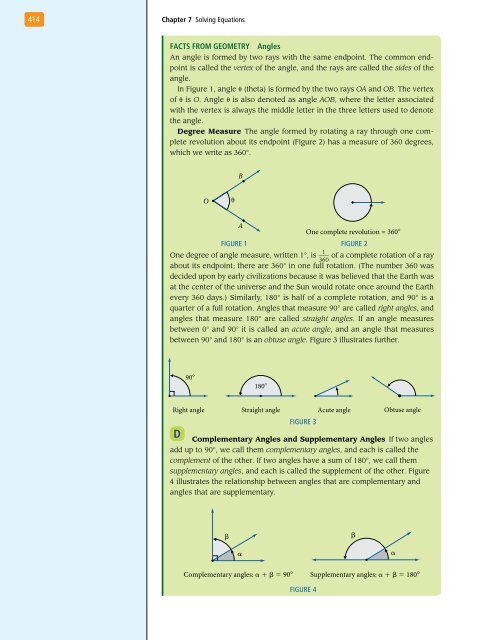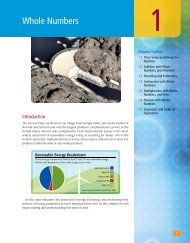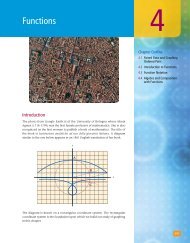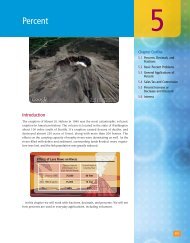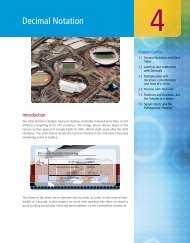Chapter 7 - XYZ Custom Plus
Chapter 7 - XYZ Custom Plus
Chapter 7 - XYZ Custom Plus
- No tags were found...
Create successful ePaper yourself
Turn your PDF publications into a flip-book with our unique Google optimized e-Paper software.
414<strong>Chapter</strong> 7 Solving EquationsThe area of this solar panel is 150 + 45x square inches.facts from geometry AnglesAn angle is formed by two rays with the same endpoint. The common endpointis called the vertex of the angle, and the rays are called the sides of theangle.In Figure 1, angle θ (theta) is formed by the two rays OA and OB. The vertexof θ is O. Angle θ is also denoted as angle AOB, where the letter associatedwith the vertex is always the middle letter in the three letters used to denotethe angle.Degree Measure The angle formed by rotating a ray through one completerevolution about its endpoint (Figure 2) has a measure of 360 degrees,which we write as 360°.BOAOne complete revolution = 360Figure 1Figure 2One degree of angle measure, written 1°, is _1 of a complete rotation of a ray360about its endpoint; there are 360° in one full rotation. (The number 360 wasdecided upon by early civilizations because it was believed that the Earth wasat the center of the universe and the Sun would rotate once around the Earthevery 360 days.) Similarly, 180° is half of a complete rotation, and 90° is aquarter of a full rotation. Angles that measure 90° are called right angles, andangles that mea sure 180° are called straight angles. If an angle measuresbetween 0° and 90° it is called an acute angle, and an angle that measuresbetween 90° and 180° is an obtuse angle. Figure 3 illustrates further.90180Right angleStraight angleAcute angleObtuse angleDFigure 3Complementary Angles and Supplementary Angles If two anglesadd up to 90°, we call them complementary angles, and each is called thecomplement of the other. If two angles have a sum of 180°, we call themsupplementary angles, and each is called the supplement of the other. Figure4 illustrates the relationship between angles that are complementary andangles that are supplementary.Complementary angles: 90°Supplementary angles: 180°Figure 4


